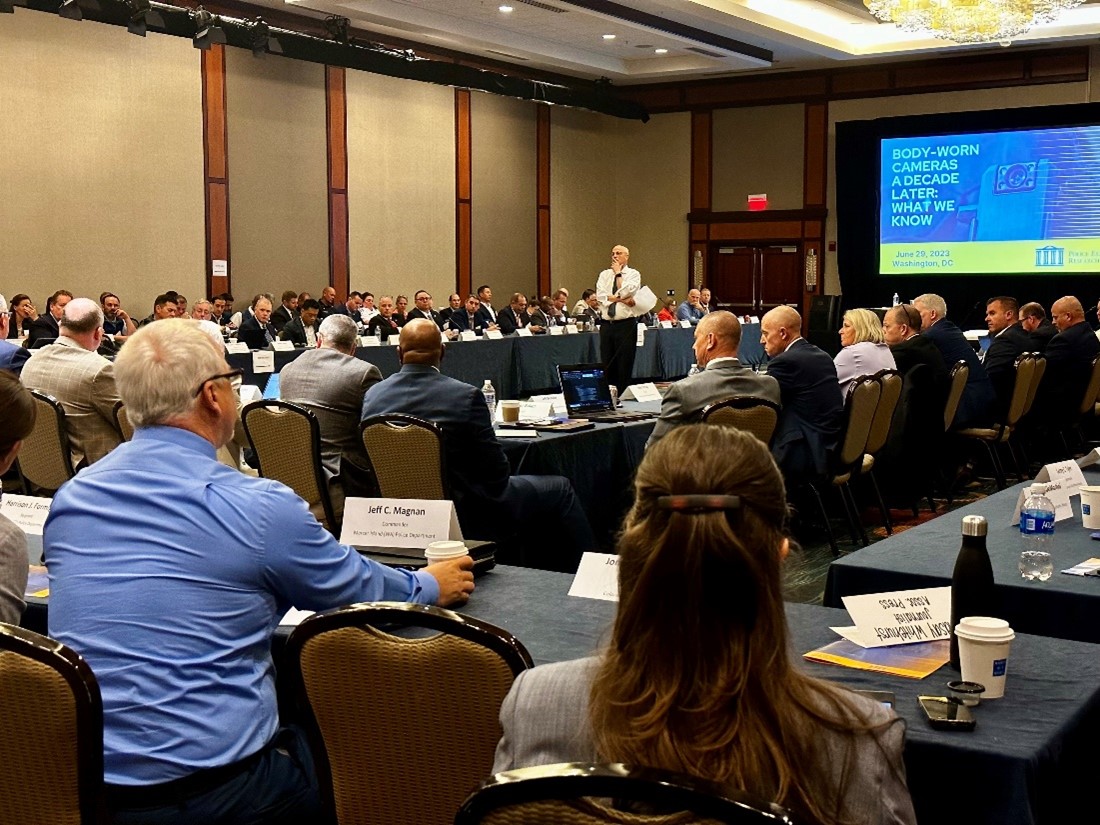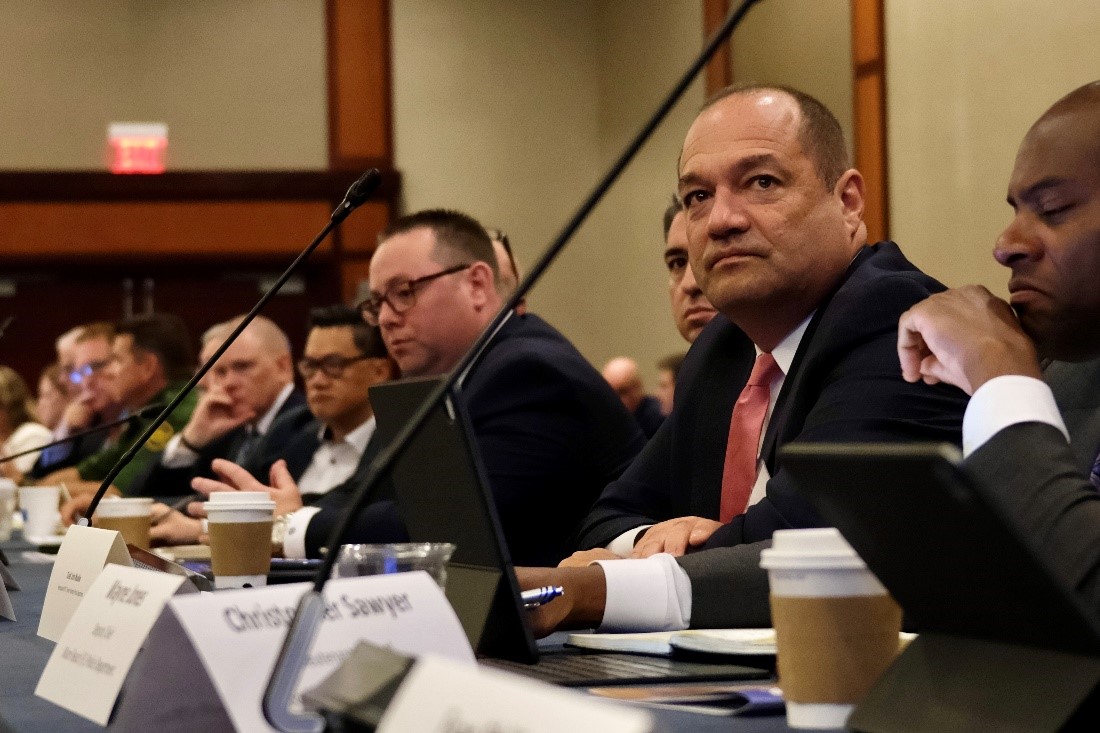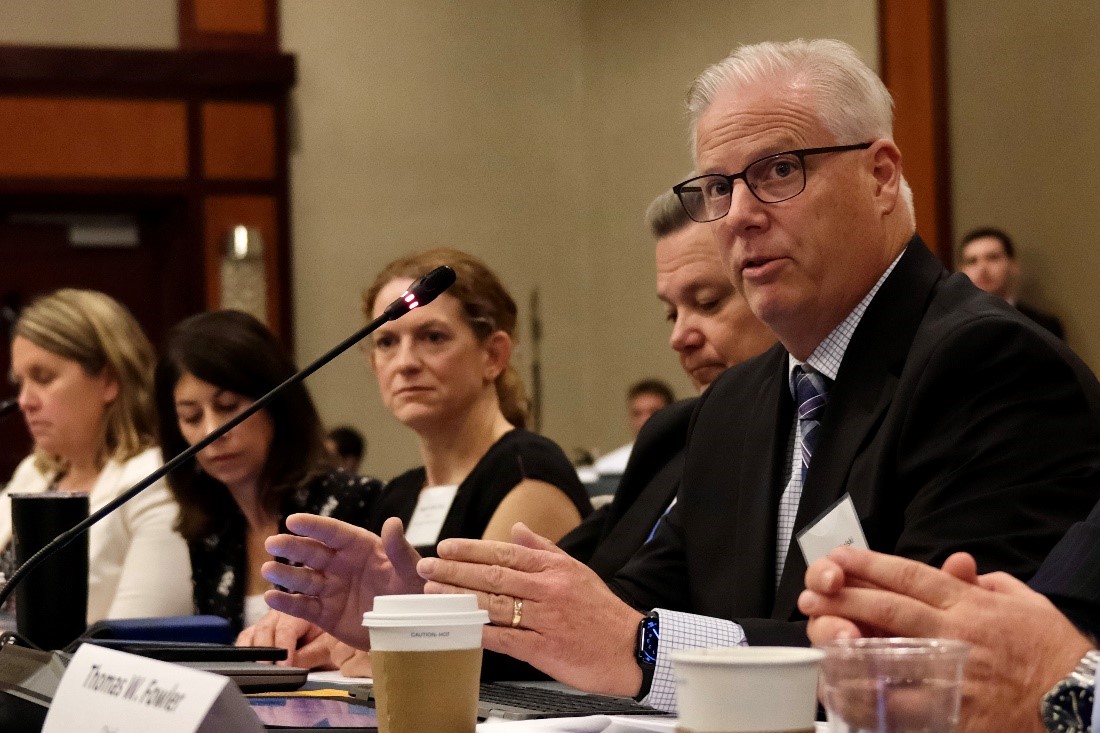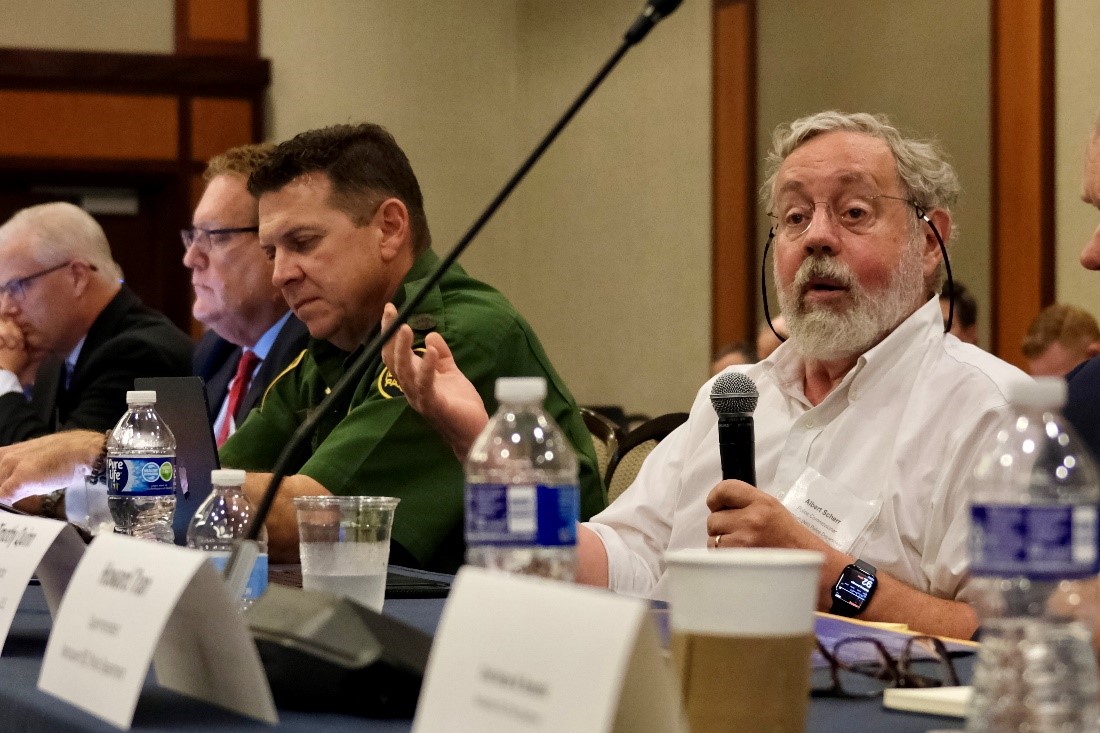|
July 8, 2023 Should officers be allowed to view body-worn camera footage before giving a statement?
PERF members, Almost ten years ago, the COPS Office asked PERF to develop guidelines and recommendations about police body-worn camera policies. This project occurred in the early days of body-worn camera programs, and the 33 recommendations were developed in consultation with chiefs, sheriffs, rank-and-file officers, and union leaders. Many agencies had not yet equipped their officers with cameras, and those that had were just wrapping their heads around the many implementation challenges. The profession now has nearly a decade of additional experience with body-worn cameras, so last week PERF held an all-day conference for nearly 200 police leaders from around the country and Canada to discuss what we’ve learned since our 2014 report and how we might want to revise our recommendations. Nearly 200 attendees gathered in Washington, D.C. for PERF’s all-day conference on current issues surrounding body-worn cameras. Most of our recommendations are still applicable and widely accepted, such as “Officers should be required to inform subjects when they are being recorded unless doing so would be unsafe, impractical, or impossible.” But one recommendation that was controversial at the time and remains so today is whether officers should be allowed to review body-worn camera footage of a critical incident before writing a report. We spent about half of last week’s meeting on this difficult and complex topic. In 2014, we recommended that “officers should be permitted to review video footage of an incident in which they were involved, prior to making a statement about the incident.” We gave four reasons why:
At the time, officers saw body-worn cameras as a new obligation, and chiefs and sheriffs wanted them to embrace this technology. Many of us felt that if we were going to ask officers to wear cameras around all day, we should allow them to use the footage as a resource when they need to recall what happened. Over the past decade, many agencies have adopted this policy, and some attendees felt that it is still appropriate. “The video is going to be what it’s going to be no matter what,” said Chief John Mueller of the New York Metropolitan Transportation Authority Police. “We have to own it. So I think that there’s nothing wrong with letting [the officer] also see it, because it’s not going to change anything.” New York Metropolitan Transportation Authority Police Chief John Mueller Others felt that PERF should rethink this recommendation. We highlighted the recent agreement in Portland, Oregon between the police department and the officers’ union. Under this agreement, internal affairs investigators’ interviews with officers who use deadly force will begin with a “perceptual interview” before either the officer or the investigator has viewed the body-worn camera footage. Both parties will then take a break to view the footage before coming back together to continue the interview. For some lower-level uses of force, officers will be allowed to view footage prior to making a statement. Some at our meeting said other agencies should adopt Portland’s approach. “Prosecutors say [officers’] subjective beliefs ultimately have to be objectively reasonable,” Fargo (ND) Chief David Zibolski said. “So after officers give those subjective beliefs and observations, investigators can walk through that video. If there are major discrepancies or questions, they can follow up. But they’re first getting information from the officer, because there are all those human sensory things that a video does not show.” Fargo, ND Police Chief David Zibolski Albert Scherr, an elected police commissioner in Portsmouth, New Hampshire, felt that interviewing the officers before they see the video footage may help investigators gather a more complete picture of what happened. “The perceptual interview gives you one collection of data points, the [body-worn camera] video gives you another collection of data points,” Commissioner Scherr said. “Those two are overlapping, but they’re different. I’m sure many officers here can tell you how many times a video doesn’t capture all the things they saw when they were at the scene. . . . The best prosecutors want as many different data points as they can get as to what happened. By having the officer view the video before they write their first statement, you’re merging data points and the perceptions get lost.”
Portsmouth, NH Police Commissioner Albert Scherr Based on the meeting and our review of agencies’ policies, PERF will publish a report later this year revisiting some of our 2014 recommendations, and this is one we might want to revise. But I’d be interested to hear what you all think, and how your agency is handling this tricky issue. We’ll be discussing this issue further at our Annual Meeting in New York City July 17-19. Cameras have dramatically changed policing over the past decade. When we developed our previous recommendations, body-worn cameras were new and were met with some skepticism. Last week, I asked our conference attendees if anyone would choose not to equip officers with body-worn cameras, and no one raised their hand. Cameras are here to stay, and I hope our forthcoming report will help you navigate the policy issues. Best, Chuck |




